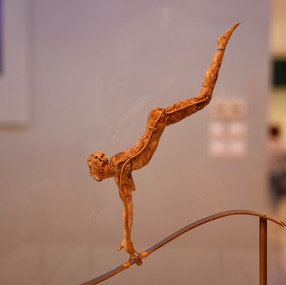PALACE OF KNOSSOS & HERAKLION ARCHEOLOGICAL MUSEUM
- chuckmeltzer
- Aug 11
- 2 min read
Knossos was inhabited for several thousand years, beginning with a neolithic settlement sometime in the seventh millennium BC, and was abandoned after its destruction in 1375 BC which marked the end of Minoan civilization. It was located high up on a hill to give it a strategic advantage. The first palace on the low hill beside the Krairatos river was built around 1900 BC on the ruins of previous settlements. It was destroyed for the first time along with the other Protopalatial palaces of Crete in 1700 BC, probably by a large earthquake or foreign invaders. It was immediately rebuilt to an even more elaborate complex and until its abandonment it was damaged several times during earthquakes, invasions. In 1450 BC Knossos palace was damaged after the colossal volcanic eruption of Thera, and the subsequent invasion of Mycenaeans who made Knossos their capital as they ruled the island of Crete until 1375 BCE.

The palace of Knossos was the center of administration of the entire island of Crete during Minoan times, and its position as such allowed for unprecedented growth and prosperity as witnessed by the plethora of storage magazines, workshops, and wall paintings.
The Throne room with its gypsum throne and benches to accommodate sixteen persons.

The theater was a forum of elaborate rituals and extraordinary historical occurrences.
Arthur Evans, the British Archaeologist who excavated the site in 1900 AD restored large parts of the palace in a way that it is possible today to appreciate the grandeur and complexity of a structure that evolved over several centuries and grew to occupy about 20,000 square meters. Walking through its complex multi-storied buildings one can comprehend why the palace of Knossos was associated with the mythological labyrinth of the Minotaur. This model helps to understand the grandeur of the former palace.

One of the most important museums of Greece, the Heraklion Archaeological Museum displays artifacts from the numerous archaeological sites of Crete. What is so amazing about these pieces below is that they date from the Minoan Period, 1700-1400 BC, which means all this was done by hand with limited tools. The details in the gold bumble bee piece is astounding. I also found the clay heads to make me think about Picasso and where he may have been inspired for some of his art.









































Comments